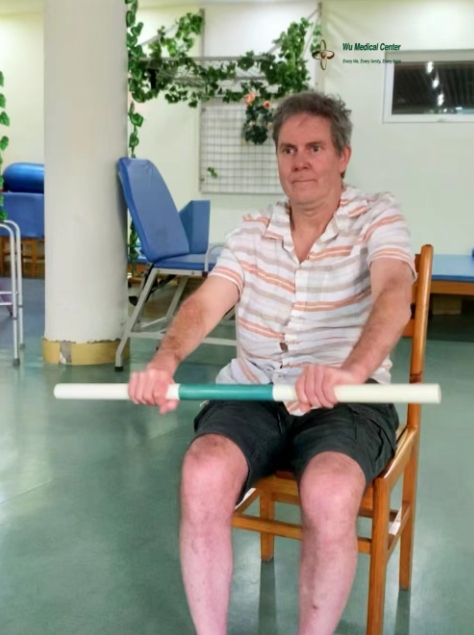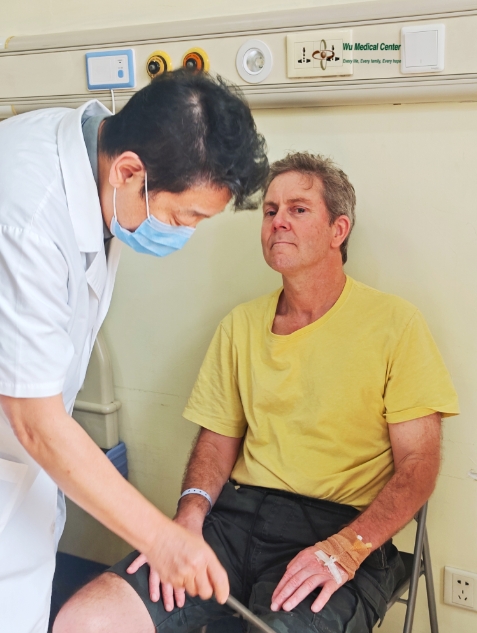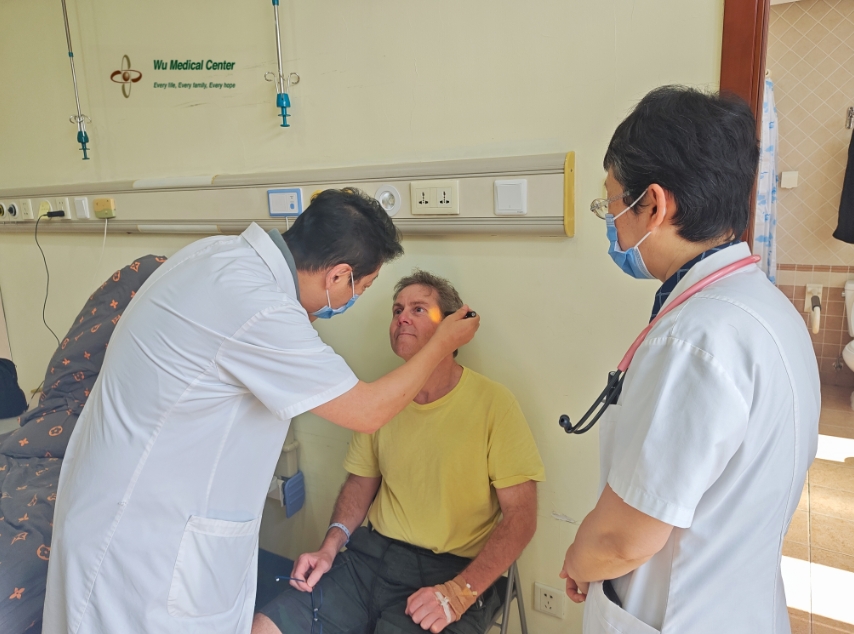Roland Matthews-Multiple sclerosis (MS)-(New Zealand)
 Patient Name: Roland Matthews
Patient Name: Roland Matthews
Gender: Male
Age: 55 years old
Nationality: New Zealand
Diagnosis: Multiple sclerosis (MS)
Admission Condition:
The patient was admitted due to "recurrent progressive limb movement and sensory disturbance for more than 29 years" with a diagnosis of "multiple sclerosis". He had residual weakness in his limbs, ataxia, imbalance, inability to rise from a sitting position and stand independently, inability to walk independently using a Walker Assist Device, fatigue, limb spasms, jerks and pain. He also presented with edema and redness of his ankles and low body temperature.
Admission Physical Examination:
The patient's blood pressure was 134/84 mmHg, and his heart rate was 66 beats per minute. There were no significant abnormalities in his general physical examination.
Neurological Examination:
The patient was clear-headed and his mental status was normal. His speech was slightly unclear. His pupils were sensitive to light and his eye movements are unrestricted. His forehead wrinkles were symmetrical, his tongue was protruded in the middle, and his epiglottis was in the middle. His proximal upper left limb muscle strength was grade 4-, distal muscle strength was grade 2+; his proximal upper right limb muscle strength was grade 4-, distal muscle strength was grade 3+, while his lower limbs have muscle strength of grade 2. His abdominal reflex was not elicited a reaction. His upper limb tendon reflexes were mostly normal, but his lower limb tendon reflexes were reduced. There was a positive left Babinski sign. Pain sensation in the right side was reduced compared to the left, while the pain and tactile sensation at the extremities were decreased. His upper limbs showed clumsiness and lack of stability during coordination, finger-finger testing, and nose-finger testing, with poorer performance in the left limb. He could not lift his lower limbs on his own and required assistance from 2 people to stand up. Additionally, he could not maintain a standing position independently. His meningeal irritation sign was negative.
Treatment process:
The patient was admitted with a clear diagnosis of "Multiple sclerosis." He was treated for 2 weeks with mesenchymal stem cell therapy to regulate the immune system, nerve stem cell therapy to repair axonal and myelin damage, adjuvant drug therapy with CAST, and rehabilitation treatment.
Post-treatment:
The patient's motor and balance function has significantly improved. His upper limbs' motor stability and accuracy have increased, and he is able to complete postural support with both lower limbs. He can stand independently from a low seat, and with the help of an aid walker, he is able to walk, turn, and walk about 20 meters. His stability during walking has improved, and his lower limb muscle strength has increased by approximately 1.5 grades, with both lower limb muscle strengths reaching grade 3+. His energy, physical stamina, and exercise endurance have all improved compared to before treatment, and his limb tremors have decreased significantly, as has his pain.



